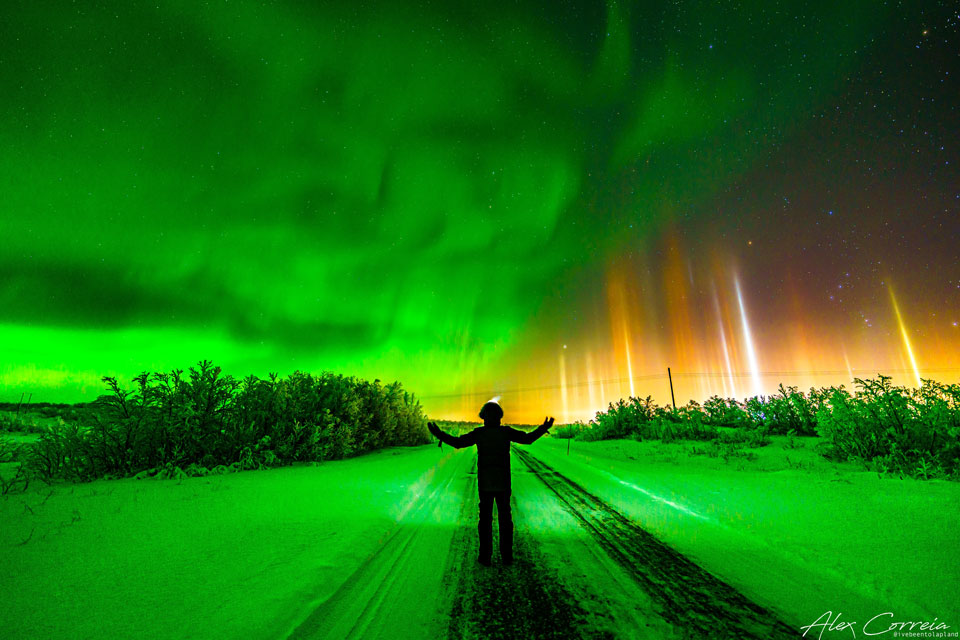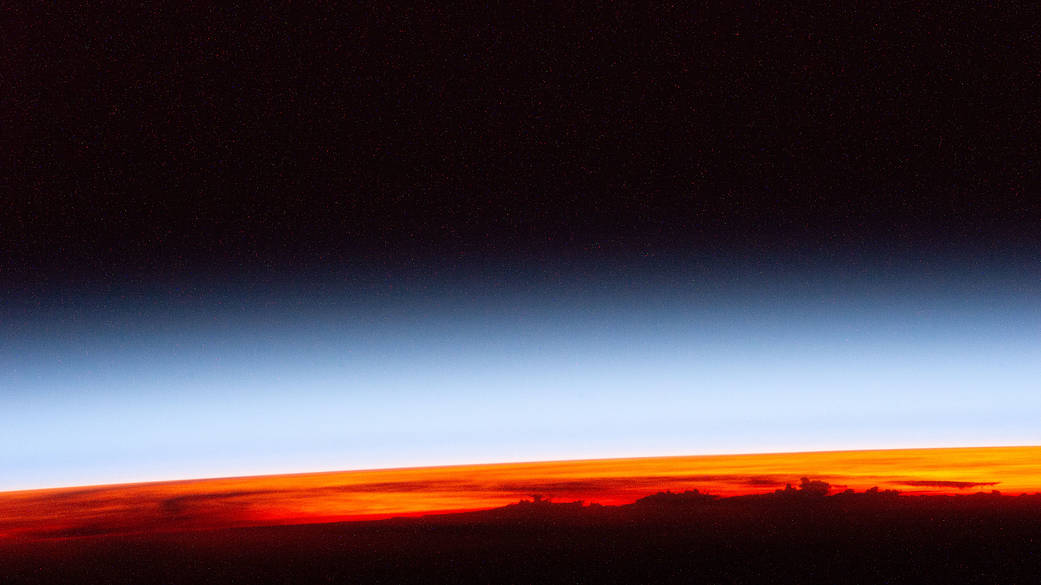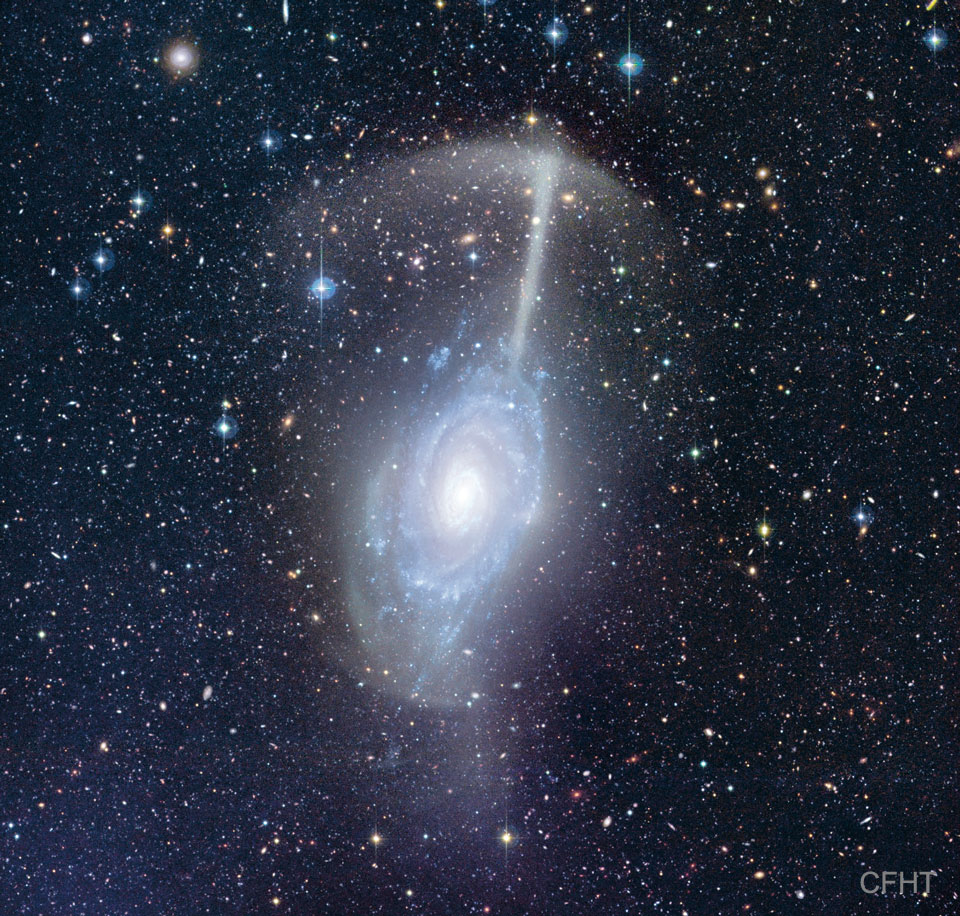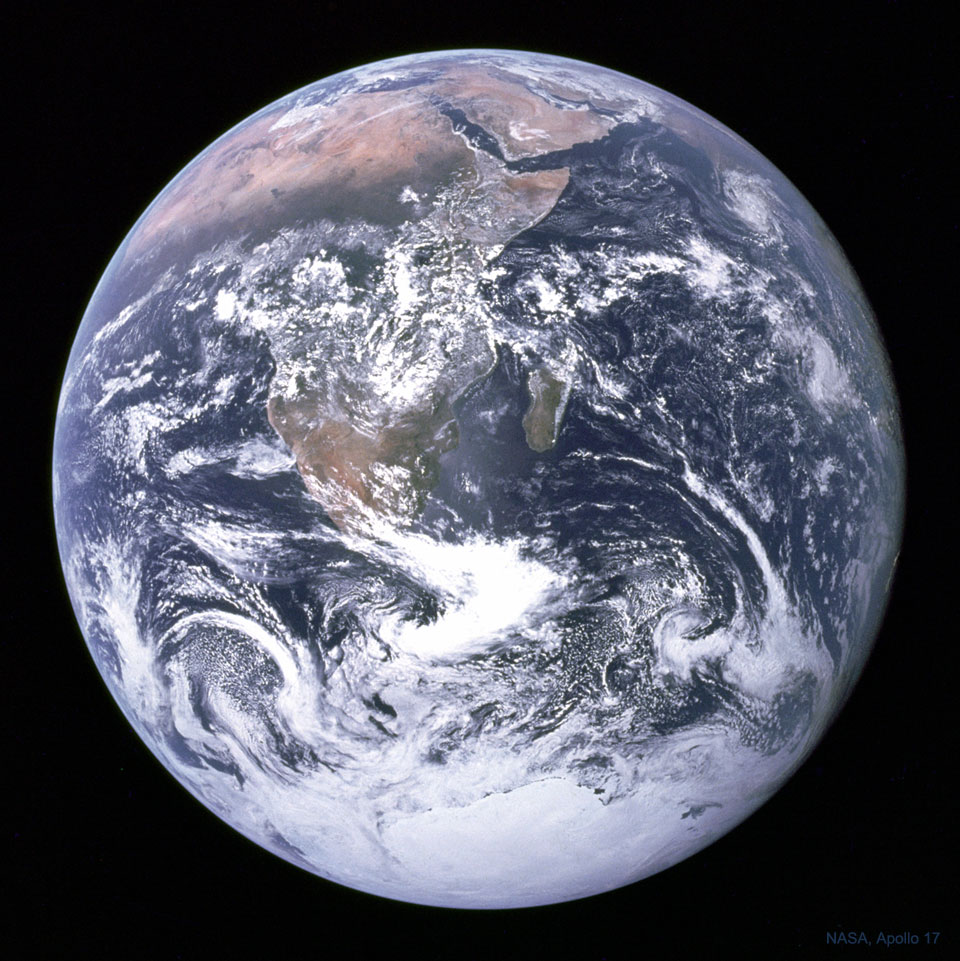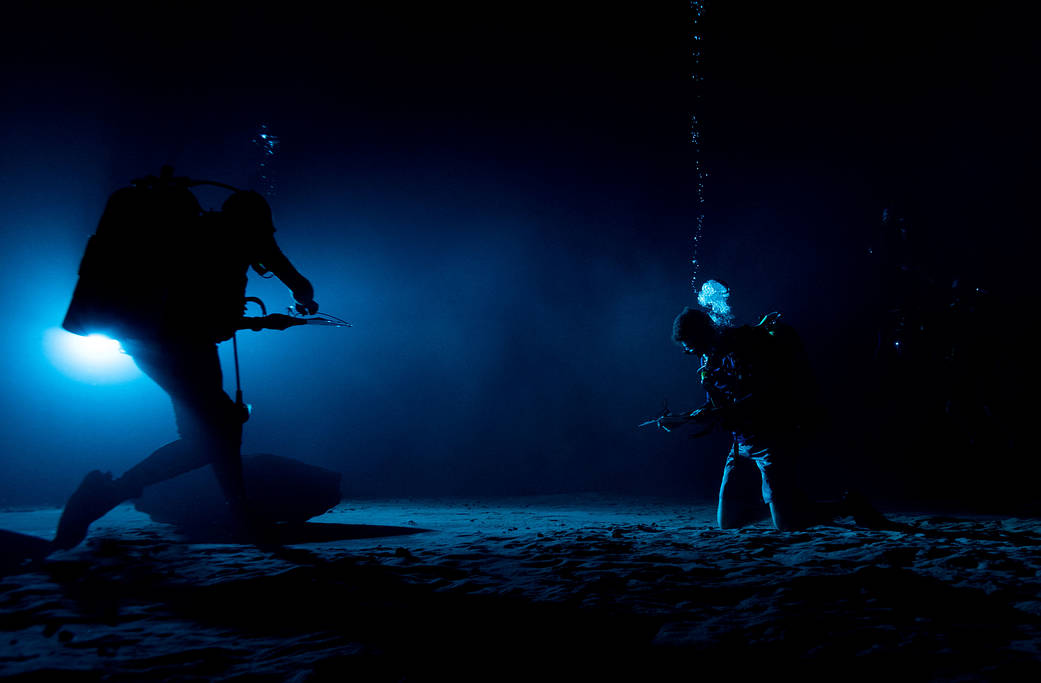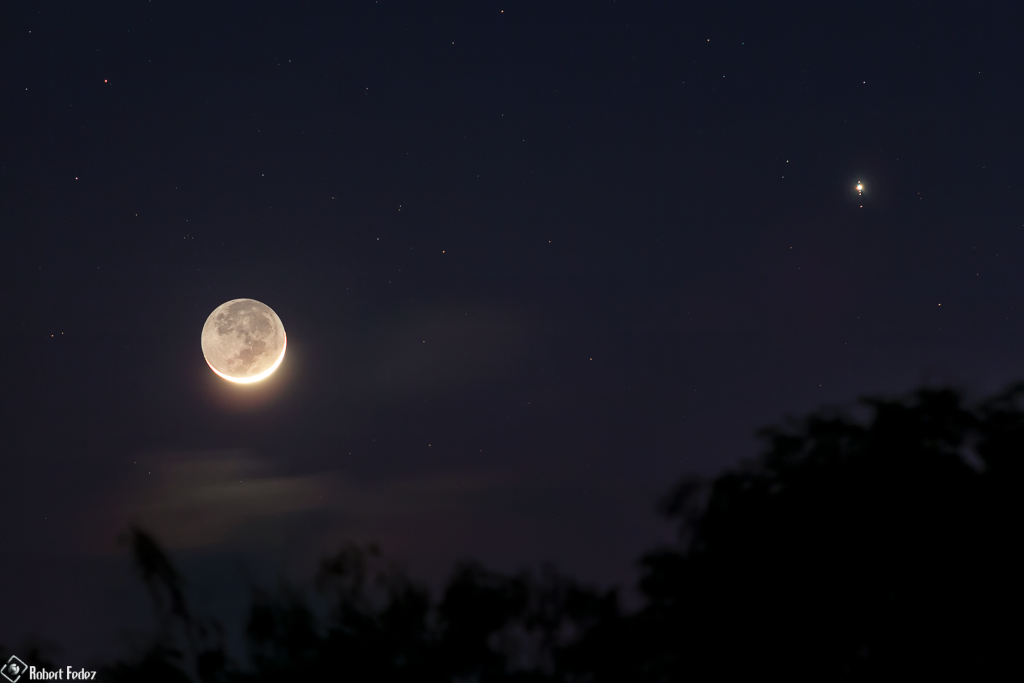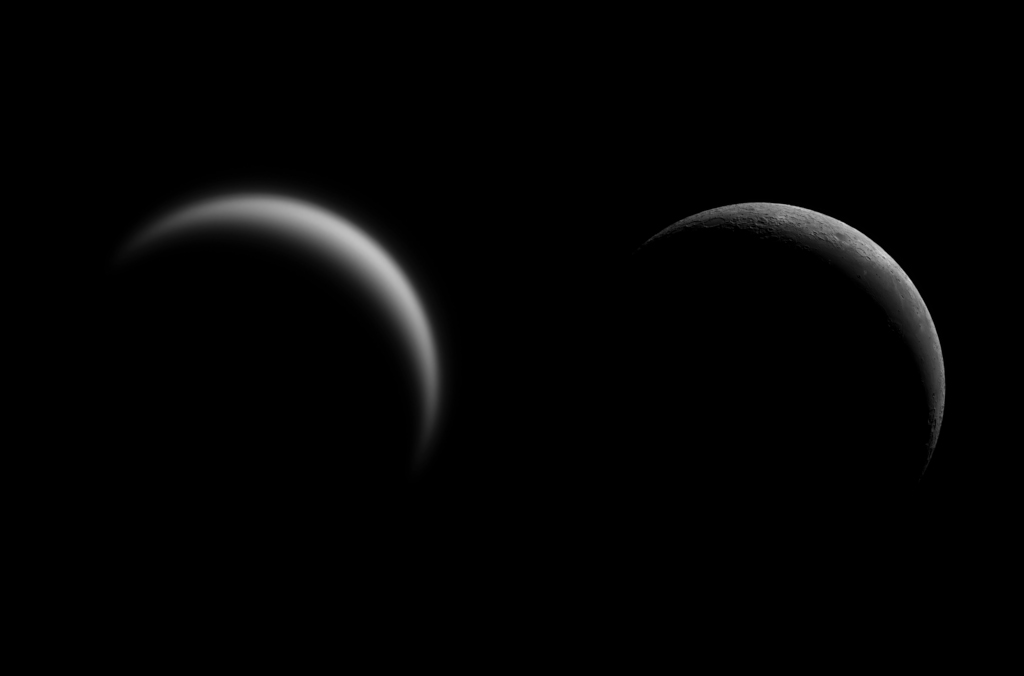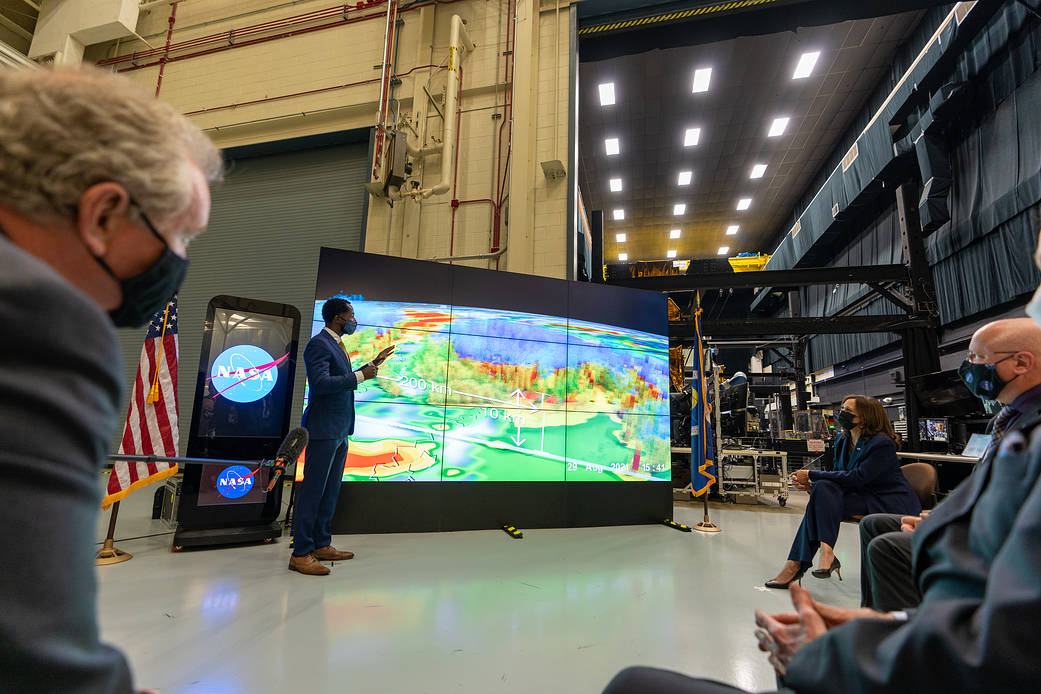挪威上空的极光和光柱
2022年2月8日 Aurora and Light Pillars over Norway Image Credit & Copyright: Alexandre Correia Explanation: Which half of this sky is your favorite? On the left, the night sky is lit up by particles expelled from the Sun that later collided with Earth’s upper atmosphere — creating bright auroras. On the right, the night glows with ground lights reflec...

